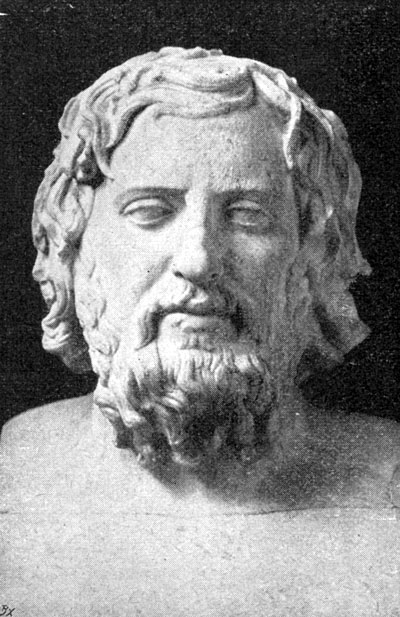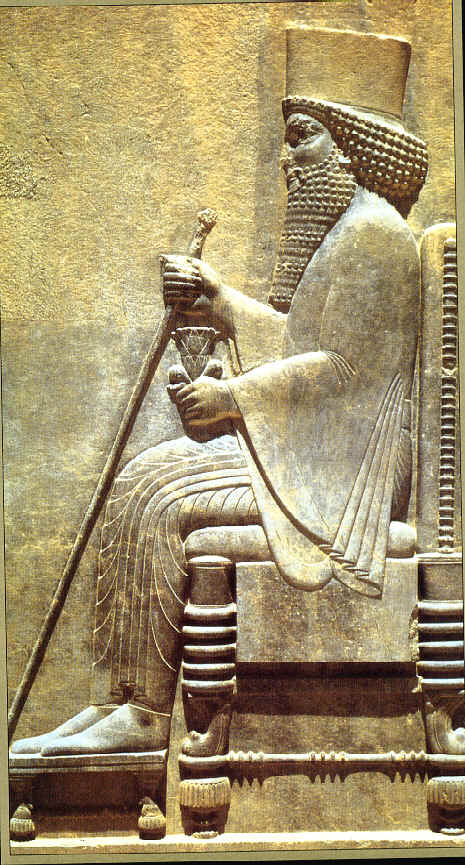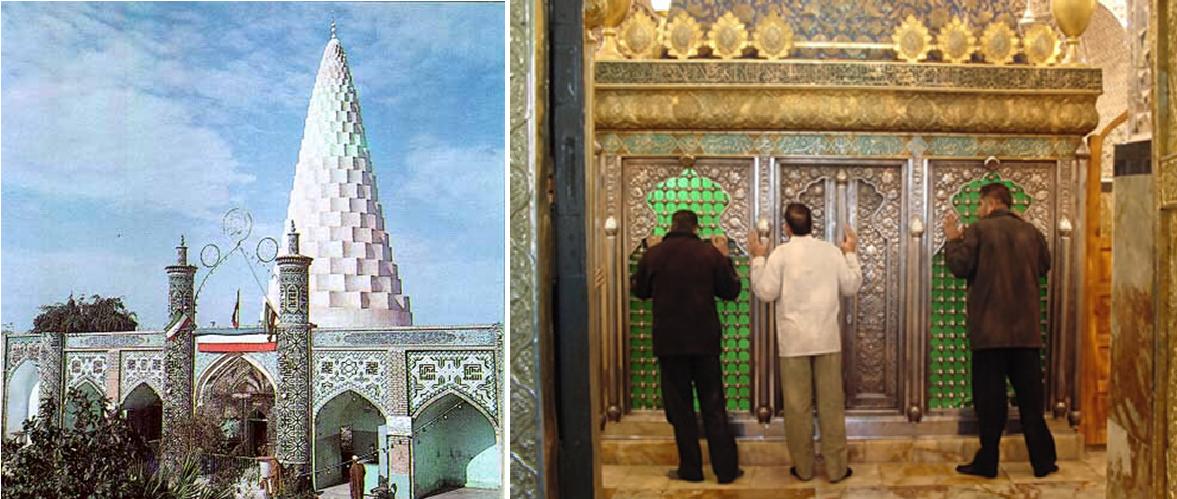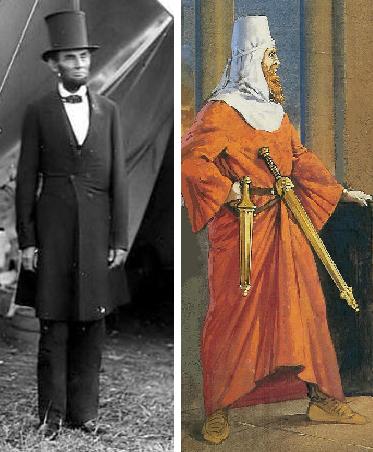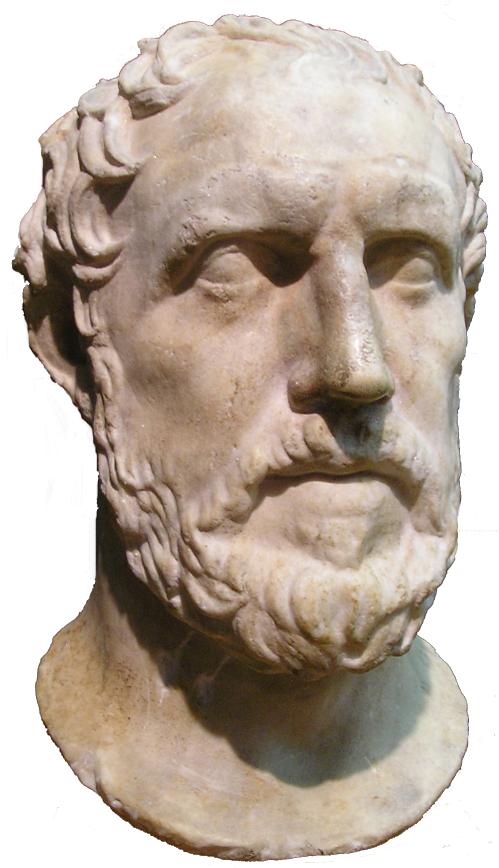Greetings to the Distinguished Staff of Der Spiegel Magazine,
Recently a number of my colleagues as well as students have brought the following article to my humble attention:
FALLING FOR ANCIENT PROPAGANDA
UN Treasure Honors Persian Despot
By Matthias Schulz
http://www.spiegel.de/spiegel/0,1518,564395,00.html (German)
http://www.spiegel.de/international/world/0,1518,566027,00.html (English)
If the above report had been written by ideologues, it would not have been very surprising, as historical revisionism and political motivations do often accompany one another. It is however lamentable that a distinguished world-class magazine such as Der Speigel has chosen to perpetuate a series of half-truths that resemble the writings of conspiracy theorists. I will of course expostulate upon the narratives of the latter on item (7) below, but first allow me to briefly examine a number of statements made by Mr. Schulz in items (1) – (6).
(1) “Some Greeks praised the conqueror. Herodotus and Aeschylus (who lived after Cyrus’s death) called him merciful.”
Perhaps Mr. Schulz is not aware that it was not just “Some Greeks” who praised Cyrus. This is true despite the fact that Classical Greece and the Achaemenid Empire fought many bitter and bloody wars, notably at Marathon (490 BC), Thermopylae and Salamis (480 BC). It is also a fact that the mainland (European) Greeks fought hard against the Achaemenid Empire to retain their independence. Why would a nation that had fought so hard against the Achaemenid Empire, have any reason to selectively“flatter” Cyrus the Great? This is because the Greeks, who excelled in the disciplines of balanced thought and logical thinking realized that just because they were at war with the Achaemenid Empire did not mean that all members and rulers of that Empire were “evil”. Simply put, they did not allow their political passions to bias their views of “the other”, even if that other was a military opponent. Nobody forced the ancient Greeks to describe Cyrus the Great in a favorable manner. The Greeks in fact had written a virtual compendium of Cyrus entitled the Cyropedia of Xenophon.
The favorable recordings of Cyrus were certainly not a minority opinion in ancient Greece. This is corroborated by Xenophon (431-355 BC) in his work, the Cyropedia.
Far more interesting however is Mr. Schulz’s silence with respect to Alexander the Great. Alexander conquered the Achaemenid Empire and was instrumental in putting the city of Persepolis to the torch (in revenge for Xerxes’ invasion of Greece and the burning of Athens in 480 BC). It was the same Alexander who accorded his highest respects to Cyrus the Great. Alexander not only held a deep respect and admiration for Cyrus, he also regarded him as his personal hero. It is fact that Alexander had always wished to visit the tomb of Cyrus at Pasargardae. One excellent source for the history of these events is Arrian (Arrian, XXIX, 1-11) who has narrated this aspect of Alexander’s conquests of ancient Iran.
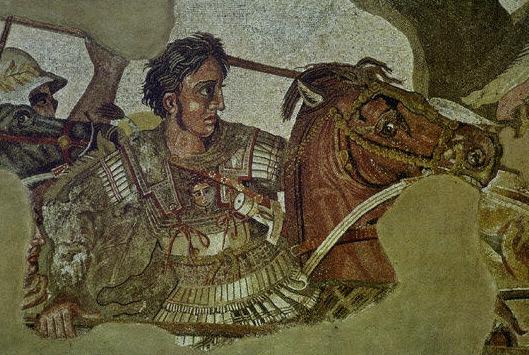
Alexander (356-323 BC) held a deep respect and profound admiration for Cyrus the Great. He assumed the mantle of “the world hero” from Cyrus and attempted to fuse the Iranians and the Greeks into a single and unified realm.
When Alexander reached the tomb of Cyrus, he was highly distressed to learn that the tomb had been violated by robbers. Cyrus’ remains had been damaged as thieves had unsuccessfully tired to steal his coffin. Alexander immediately ordered Cyrus’ coffin to be repaired, and placed back into the tomb. The other damaged contents were all restored to their original form. The tomb was repaired under Alexander’s explicit orders; the structure’s entrance was sealed. Alexander even spared the frontier post of Kurtakh as this had been originally founded by Cyrus; the city was known to the Greeks as Cyropolis (the city of Cyrus) (see Quintus Curtius, VII, 6.20).
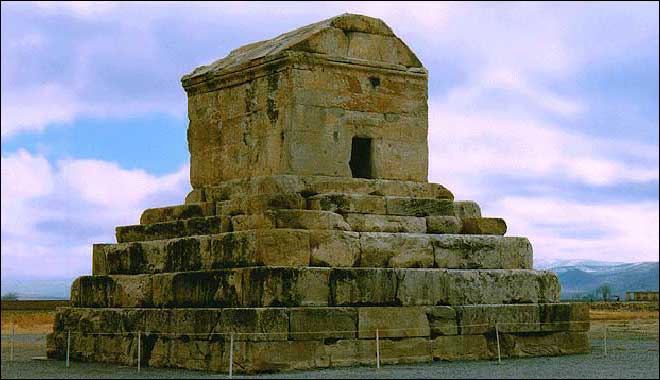
The Tomb of Cyrus the Great at Pasargadae where Alexander paid his respects. The tomb is a UNESCO World Heritage site.
Once again, Mr. Schulz can rest assured that the Hellenic views regarding Cyrus have never been historically confined to “Some Greeks”. Mr. Schulz’s selective historical amnesia is what is termed as the cherry-picking method of analysis to help portray a set of personalized beliefs.
(2) “The Bible describes him as the ‘anointed one,’ because he supposedly permitted the abducted Jews to return to Israel.”
What does Mr. Schulz mean by “supposedly permitted the abducted Jews to return to Israel”? Is Mr. Schulz suggesting that this portion of history is also “propaganda”? If this were the case, then were the Jews forced to remain in Babylon even after Cyrus’ arrival? If the Jews were never liberated as Mr. Schulz seems to aver, then why have no recordings been discovered in any Hebrew sources that contradict the established Biblical sources? Surely, the Jews who were amongst the most excellent record-keepers of antiquity would have written on other possible “alternative” histories of Cyrus, especially after the fall of the Achaemenid Empire to Alexander the Great. No such records have surfaced.
Mr. Schulz’s creative penmanship is at variance with the established academic discourse on the history of Cyrus the Great and the liberation of the Jews from their Babylonian captivity. The distinguished members of Der Spiegel are invited to consult the following link on Encyclopedia Brittanica regarding Cyrus the Great:
While a virtual cornucopia of other books may be suggested, the following book may of interest as it is in German:
Darius und die Perser: E. Kulturgeschichte d. Achameniden (Holle vergangene Kulturen)
By: Professor Walther Hinz
Finally, there are a large number of citations in the Bible about Cyrus. Examples of references to “Koresh” (Cyrus’ name in the Bible) are:
- The generosity of Cyrus as reflected in the Old Testament where he is cited as Yahweh’s anointed (See Book of Ezra Chapter 1 to witness the high regard that Cyrus was held by the Jews). Cyrus is viewed as savior of the Jews in the 2nd Book of Isaiah.
- Koresh, is hailed as a Messiah by the Jews. Isaiah cites Cyrus as “He is my Shepherd, and he shall fulfill all my purpose” (Isaiah, 44.28; 45.1; see also 35, 40-55).
The king also ordered sacred Hebrew utensils confiscated earlier by Nebudchadnezzar to be restored to Jewish ownership:
Also Cyrus the king brought forth the vessels of the house of The Lord, which Nebuchadnezzar had brought forth out of Jerusalem, and had put them in the house of his gods; Even those did Cyrus king of Persia bring forth by the hand of Mithredath the treasurer, and numbered them unto Sheshbazzar, the prince of Judah” (Ezra I:7-8)
Cyrus also allowed the Jews to rebuild their Temple in Jerusalem and supported that reconstruction with an imperial stipend from the treasury:
They gave money also unto the masons, and to the carpenters; and meat, and drink, and oil, unto them of Zidon, and to them of Tyre, to bring cedar trees from Lebanon to the sea of Joppa, according to the grant that they had of Cyrus king of Persia.” (Ezra III:7)
The Empire continued to support the Jews as indicated by a decree issued by Darius the Great (549-486 BC) in 519-518 BC allowing the Jews to complete the reconstruction of the Jerusalem Temple:
Then came the same Sheshbazzar, and laid the foundation of the house of God which is in Jerusalem: and since that time even until now hath it been in building, and yet it is not finished. Now therefore, if it seem good to the king, let there be search made in the king’s treasure house, which is there at Babylon, whether it be so, that a decree was made of Cyrus the king to build this house of God at Jerusalem, and let the king send his pleasure to us concerning this matter.” (Ezra 5:13-17)
Darius the Great (549-486 BC). He continued supporting the Jews in accordance with those polices set be his predecessor, Cyrus the Great.
Darius also continued the process of transferring back to the Jews all those holy utensils that had been captured by Babylon:
And also let the golden and silver vessels of the house of God, which Nebuchadnezzar took forth out of the Temple which is at Jerusalem, and brought unto Babylon, be restored, and brought again unto the Temple which is at Jerusalem, every one to his place, and place them in the house of God.” (Ezra VI:3-5)
Artaxerxes I (Old Persian: Artakhshathra) who became king in 464 BC continued Cyrus’ policy of favoring the Jews by his continued support for the rebuilding of the Jerusalem Temple. Artaxerxes’ name is recalled with honor in the Jewish holy texts of Nehemiah and Ezra due to his support of Judaism. Greco-Roman sources, notably Plutarch in Artaxerxes has described the king as being “a gentle and noble spirit”.
The tomb of Esther and Mordechai in Hamedan, northwest Iran. External view (left) and the interior of the tomb (right).
The tomb of Daniel in Khuzestan in southwest Iran. The main structure (note cone-like dome) as it stands today (left) and Iranian pilgrims paying homage within the tomb of Daniel.
The Biblical characters Ezra, Daniel, Esther and Mordecai played historically important roles in the Persian court. Jews remained very loyal subjects of the Empire, even during those times when Syria and Egypt broke into rebellion (Frye, 1984, p.114).
Historically, the Jews have often sided with the Iranian Empires in the latter’s contests against the Romano-Byzantine Empires. By Iranian Empires we are now referring to the second (Parthian 247 BC-226 AD) and third (Sassanian 224-651 AD) Empires; the first being the Achaemenid (550-333 BC). While a detailed analysis of all historical archives are impractical here, a number of examples can be provided to illustrate Jewish sympathies with the Iranian kingdoms before the arrival of the Islamic armies of Arabia in 637-651 AD. During the Parthian era Jews cooperated with the forces of Pacorus against the Romans in 40-39 BC (i.e. Craven, 1920, p.53) and during the Sassanian era the Jews cooperated with General Shahrbaraz in his capture of Jerusalem in 614 AD (Sebeos 115-116, 69).
The brief analysis made serves to highlight the importance of Jews in the history of Iran since antiquity. Once again, what is Mr. Schulz referring to by stating that Cyrus “supposedly permitted the abducted Jews to return to Israel”?
(3) “… modern historians have long since debunked such reports as flattery. ‘A shining image of Cyrus was created in antiquity,’ “
The statement “modern historians have long since debunked such reports as flattery” is false, as the vast majority of scholarship does not agree with the views being cited by Mr. Schulz.
The only scientifically valid method of “debunking” historical reports is by being able to discovermultiple, independent and reliable sources that are contemporary to the period (or approximately to that time). The critical reliance upon primary sources and archaeology is analogous to the necessity of using calculus and physics in engineering.
What Schultz may be referring to by citing “modern historians” (and this seems to be central to his thesis) is what is called secondary sources. These are the books and articles that historians (or writers) often produce to convey a certain viewpoint or simply choose to report on what has occurred based on primary sources.
Yes, it is imperative for historians to question the original sources, but to substantiate a call to dramatically revise history (as Mr. Schulz is demanding), one needs solid evidence to back one’s assertions. Secondary sources with no or little support from the primary sources cannot be used as definitive sources. In this case, one is citing opinions and speculations. When one (a) chooses to widely diverge from what has been established from a variety of corroborating sources in antiquity and (b) fail to provide a concrete (as in proof) basis for rejecting those sources, then one is engaging in revisionism, a method that was common practice under the Stalinist “historians” of the former Soviet Union. By dismissing the primary sources as mere “flattery”, Mr. Schulz has singlehandedly discredited the need for historians to learn ancient languages such as Akkadian, Aramaic, Babylonian, Old Persian, etc. or engage in archaeological research.
If we strictly follow Mr. Schulz’s logic, then we can begin questioning all primary sources as“propaganda” and “flattery” without the need to back-up our assertions with evidence. Following this rudimentary system of arm-chair methods of analysis we can technically question the entire sage of human history as having been contrived!
(4) “Josef Wiesehöfer says. In truth, he was a violent ruler, like many others. His army ransacked residential neighborhoods and holy sites, and the urban elites were deported.”
Professor Wiesehöfer is certainly entitled to his opinion. Much of the research that he has conducted is extremely valuable. He has chosen to arrive at a negative conclusion of Cyrus however (a) his view is not universally accepted and (b) he lacks primary sources or evidence to back his assertions (as stated in item 3). The opinions of Professor Wiesehöfer cannot (a) by themselves conclusively negate the history that has been attested to in the original sources and (b) be used to override the majority of scholarship.
Yes, Cyrus did conquer, fight battles and ruled as an absolute monarch. The same is true of many great historical figures such as David of the Israelites, Justinian of Byzantium, Peter the Great of Russia, and a plethora of others. However the failure of logic is in supposing (and this is a supposition, not fact) that as Cyrus fought battles and conquered then he must have been a “despot who had his enemies tortured”.
An article posted on Iranian.com describes the above three academics (left to right: Amelie Kuhrt from England, Wouter Henkelman from Holland, Zainab Bahrani from Iraq) as having “…completely discredited any positive reference to Cyrus As noted by Spiegel Magazine: “Explains Josef Wiesehöfer – The notion that Cyrus introduced concepts of human rights is nonsense (page 1)…In truth, he was a violent ruler, like many others. His army ransacked residential neighborhoods and holy sites, and the urban elites were deported (page 2).” One can use Mr. Schulz’s “logic” to arrive at unwarranted conclusions. Does one cite a master statesman such as Abraham Lincoln as a “despot” simply because he fought wars? This very term (despot) was used by the confederacy and its European supporters against Lincoln at the time. Yes the American civil war was a human tragedy beyond words, but how would that justify the re-invention of Lincoln as “a despot”? President Abraham Lincoln (left) and Cyrus the Great (right) Abraham Lincoln freed the blacks of the southern United States from slavery just as Cyrus the Great freed the Jews from the Babylonian captivity. Both of these events were the consequence of battles and wars. The Babylonian captivity and the freeing of the Jews are recorded in the Biblical sources. Then again, Mr. Schulz chooses to reject the Bible as well (as discussed in item 2). This is because logic can often be distorted to produce nonsense results. In that endeavor, Mr. Schulz can certainly benefit from the study of the Greek logicians of the Classical era. Then again, Mr. Schulz has chosen to dismiss the entire set of Greek sources as well (as discussed in item 1). History cannot be reinterpreted by either the late Shah, the Mullahs of today or by Mr. Schulz. As noted in items 1-2, the favorable mention of Cyrus has already been cited by a number of ancient sources. Simply refuting them does not prove them false. However, the sources are not confined to simply Greek, Biblical, etc. sources. It is interesting that Mr. Schulz selectively quotes (or misquotes) less than a handful of historians who appear to support his views, but steers clear of a plethora of others who contradict his views. It is suggested that the Distinguished Staff of Der Speigel consult the following: Mr. Schulz repeatedly laments that the notion of Cyrus having been a defender of Human Rights is a“hoax that the UN had fallen for”. The “hoax” however has gone as far north as the Scandinavian nations, long before the UN body was formed in 1945. Kindly consult: It is surprising that Mr. Schulz would make such a statement without having consulted the actual cuneiform in British Museum first: The Cyrus Cylinder (The British Museum) Recall that in item (4) Mr. Schulz makes the following claim: His [Cyrus the Great’s] army ransacked residential neighborhoods and holy sites, and the urban elites were deported Here are some excerpts, which you (the staff of Der Spiegel) can judge for yourself: Note that Cyrus cites Marduk, the god of Babylon and not Ahura-Mazda, the Zoroastrian supreme entity of pre-Islamic Iran. Cyrus had already conquered Babylon as the one “in charge” why would he have had to cater to Marduk? There was certainly no military benefit to this. Whatever his personal motivations may have been, Cyrus respected Marduk, the god of the Babylonians and recorded this in the cylinder. The question here is thus: what does Mr. Schulz imply by “no evidence”? Is there another cuneiform that has been written that refutes the historical cuneiform cited above and supports the views of Mr. Schulz? Thus far, all Mr. Schulz has achieved in the Speigel article is to simply accuse the cuneiform of having been a historical forgery. When Biblical and Greek sources corroborate that cuneiform, he counters by citing secondary sources that dismiss these as “flattery” and “propaganda”. This is the classic case of rejecting evidence, even if it arrives from divergent and independent sources. This makes Mr. Schulz’s thinking process analogous to the members of the Flat Earth Society(an organization that believes that the earth is not round but flat): http://www.alaska.net/~clund/e_djublonskopf/Flatearthsociety.htm Using similar “Flat Earth” thinking processes, Mr. Schulz arrives towards conclusions that are not necessarily warranted. Like the members of the Flat Earth Society, Mr. Schulz seems to subscribe to some type of conspiracy theory with respect to the history of Cyrus the Great. This particular statement is both simplistic if not outright false. It is highly indicative that Mr. Schulz has either distorted information or is simply unaware of the very complex “facts on the ground” in Iran today. First, many (but certainly not all) “Mullahs” are against the legacy of Cyrus the Great and have attempted to write out the history of pre-Islamic Iran (including Cyrus the Great) from the educational curricula of Iran since 1979. The main focus of these particular Mullahs is the pan-Islamic discourse which is in fact against the heritage of ancient (pre-Islamic) Iran as well as India. This select group of Mullahs, are inspired by tenets of the original Muslim Brotherhood (the Ikhwan al-Muslemeen). While a thorough scientific analysis is impractical here, we can trace some of this thinking to those in Iran today who are imbued with the ideology of the Muslim Brotherhood. The quotes below by Dreyfus and LeMarc are revealing: The son of Shah Wallullah, Shah Abdel-Aziz, [one of great grandfathers of Muslim Fundamentalism] gathered around him a network of disciples … who visited India in 1809. Radiating from Indian centers where the British Colonial Office ruled … Islamic “purity” … considered all outside influences as suspect and evil-demanded that all Muslims safeguard themselves from the penetration of Persian traditions and Indian habits (Dreyfuss & LeMarc, 1980, p.119) Mr. Schulz’s error of superimposing ancient Iran on the current Mullahs is a common error amongst western analysts and writers at present. This is mainly the result of the tendency by these writers to view Iran in simplistic terms. The history of ancient pre-Islamic Iran is viewed with considerable disfavor by the followers of the pan-Islamists, including those inside Iran. The pan-Islamic ideologues have been vigorously funding, supporting and perpetuating the publications of Nasser Pourpirar, a man who believes that the entire history of ancient Iran, including Cyrus the Great to be a “hoax” that has been “… invented by Zionists, Americans at the University of Chicago”. For more information, please click here. Pourpirar often post his views on his Naria blog (in Persian). Nasser Pourpirar (a fanatic anti-Semite) believes that the entire history of pre-Islamic Iran as well as Alexander the Great is a hoax that has been invented by the Jews and the Americans. His views on Cyrus the Great and the Cyrus cylinder are virtually identical to those of Matthias Schulz. One cannot help but notice how closely the writings of Mr. Schulz overlap with the conspiracy theories of Pourpirar, a virulent and venomous anti-Semite. Hopefully your publication will realize the magnitude of the embarrassment (if not discrediting) that Mr. Schulz has brought upon your world-class publication by inadvertently repeating the nonsense of anti-Semite conspiracy theorists. Perhaps Mr. Schulz can choose to learn from one of my Canadian friends who had been a member of the Canadian Armed Forces during his career. As a student of history he points out the following: I am not really interested in whether modern Iran is a friendly country or not. It has no bearing on what was happening more than 1400 years in the past. This means that when one approaches the field of history, one is required to suspend one’s contemporary (political) biases. Failure to do so leads to politically-tainted speculations and the writing of fiction. In this endeavor, Mr. Schulz has certainly set the standard for creative writing. Creative writing however is not the same as objective historiography. Mr. Schulz has made it clear that he dislikes the previous Iranian government of the Shah as well as the present theocratic regime in Tehran. Unfortunately he also appears to be displaying a profound sense of antipathy against the people of Iran and their history. The history of Cyrus however belongs not just to Iran, but to the entire saga of humanity. I hope to conclude this discussion by citing the Classical Greek historian Thucydides who prophetically stated: Their judgment was based more upon blind wishing than upon any sound prevision; for it is a habit of mankind to entrust to careless hope what they long for, and to use sovereign reason to thrust aside what they do not fancy. (Book IV, 108)(5) “Only the Shah, who had his own problems in the 1960s, could have come up with the idea of reinterpreting this man as an originator of human rights.”
(6) “There is no evidence of moral reforms or humane commandments in the cuneiform document. Assyriologist Schaudig calls it “a brilliant piece of propaganda.'”

Examples of their beliefs in their website:(7) “Iran’s mullahs have not escaped the Cyrus cult. In mid-June, the British Museum in London announced that it planned to lend the valuable original cylinder to Tehran. It has become an object of Persian national pride.”

